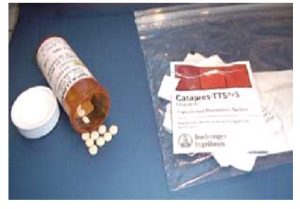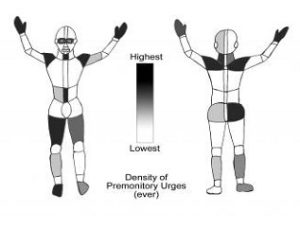Inam Joudh Radhi, Abdullah Najm Abd Zaid, Abdullah Ali Hassan
Department of chemistry, college of education for pure sciences, university of Karbala, Iraq.
ABSTRACT:
Tourette syndrome is a neurological disorder that is characterized by uncontrollable, repeated tics. These tics, which can be vocal or muscular, typically start in childhood. Although the precise etiology of Tourette syndrome is still unknown, genetics and environmental factors are thought to play a role.
Keywords: Tourette, syndrome, genetics, ADHD, and males than females.
INTRODUCTION:
Tics are repetitive, involuntary movements and vocalizations that are a feature of Tourette syndrome illness. The frequency, severity, and complexity of these neurological tics, which are also known as Tourette’s syndrome or TS, can occasionally contain obscenities or other socially inappropriate language or gestures. The disorder typically begins in childhood or adolescence and affects more males than females [1]
Although the precise cause of Tourette syndrome is unknown, doctors believe that it is related to abnormalities in the brain’s basal ganglia. Additional contributing components could come from genetic and environmental causes, as shown in the image (1) [2], which is the region in charge of controlling movement.
Image (1): shows Tourette syndrome[2].
General Tourette’s Syndrome:
A person’s daily life may be significantly impacted by Tourette syndrome, as the tics can be disruptive and cause social anxiety, embarrassment, and low self-esteem. Anxiety, depression, obsessive-compulsive disorder (OCD), attention-deficit/hyperactivity disorder (ADHD), and other conditions coexist with the disorder [3].
Symptoms and spasms of the disease:
Tourette syndrome symptoms can range from minor to severe, and they can also fluctuate over time. Common tics include face grimacing, shoulder shrugging, eye blinking, throat clearing, grunting, sniffing, and repetitive movements of arms or legs [4]
Tourette syndrome has also been linked to other neurological and behavioral diseases, such as Obsessive-Compulsive Disorder (OCD) and Attention Deficit Hyperactivity Disorder (ADHD). Additionally, it can have an impact on an individual’s daily life, including social interactions, self-confidence, and school or work performance [5].
There is presently no treatment for Tourette syndrome, although there are ways to manage its symptoms. These can include medications, behavioral therapy, and deep brain stimulation. Additionally, support groups and counseling can be helpful for individuals and families affected by Tourette syndrome [6].
In conclusion, a neurological disorder called Tourette syndrome is characterized by tics that can range in severity from mild to severe and interfere with a person’s daily activities. While it has no cure, there are various treatments available to manage symptoms. It is important to provide support and understanding for those affected by Tourette syndrome, image (2) [7].
Image (2) The relative probability of sensory tics of Tourette’s syndrome [7].
Methods of Treatment
Although there is no known cure for TS, there are strategies to manage the tics. Because their tics do not interfere with their daily lives, many TS patients do not need therapy. However, there are medication and behavioral therapies available if tics cause stress, discomfort or interfere with academics, work, or social life [8].
Medications
The medications that block dopamine, such as pimozide and haloperidol, can be used to treat both psychotic and non-psychotic disorders and are the most consistently successful therapy to manage tics. Alpha-adrenergic agonists include clonidine and guanfacine, which are typically prescribed to treat hypertension (high blood pressure), though they can also be used to treat tics.
Methylphenidate and dextroamphetamine are examples of stimulant drugs that can reduce the symptoms of ADHD in TS patients without worsening their tics. According to several researches, children who simultaneously have ADHD and TS may benefit from using these medications temporarily [9].
With the use of antidepressants, particularly serotonin reuptake inhibitors (clomipramine, fluoxetine, fluvoxamine, paroxetine, and sertraline), some patients can control their symptoms of depression, OCD, and anxiety. One of the drugs that is commonly used first when medication is needed to treat Tourette’s syndrome is clonidine (Image (3)) [10].

Image (3): Shows Clonidine is one of the medications [10].
References:
⦁ Schapiro NA. “Dude, you don’t have Tourette’s”: Tourette’s syndrome, beyond the tics. Pediatr Nurs. May-Jun;28(3):243-6, 249-53. 2002
⦁ Ohm, B. The effect of Tourette syndrome on the education and social interactions of a school-age child. The Journal of Neuroscience NursingJ: Journal of the American Association of Neuroscience Nurses, (2006).
⦁ Kurlan, R.. Handbook of Tourette’s syndrome and Related Tic and Behavioral Disorders, Second Edition. CRC Press(2005).
⦁ Jin, R., Zheng, R., Huang, W., Xu, H., Shao, B., & Chen, H. (2005).
⦁ Diagnostic and Statistical Manual of Mental Disorders. Summary of Practice: Relevant changes to DSM-IV-TR. Accessed 25 January 2007.
⦁ Scahill L, Erenberg G, Berlin CM Jr, Budman C, Coffey BJ, Jankovic J, Kiessling L, King RA, Kurlan R, Lang A, Mink J, Murphy T, Zinner S, Walkup J; Tourette Syndrome Association Medical Advisory Board: Practice Committee. Contemporary assessment and pharmacotherapy of Tourette syndrome. NeuroRx. Apr;3(2):192-206,2006.
⦁ Tourette’s Disorder, Diagnostic and Statistical Manual of Mental Disorders (5th ed.). American Psychiatric Association. 2013.
⦁ Bloch, MH, Leckman, JF. Clinical course of Tourette Syndrome. J Psychosom Res. 2009.
⦁ American Psychiatric Association. Diagnostic and statistical manual of mental disorders: , fifth edition: DSM-5. Washington, DC; 2013.
⦁ Leckman JF, Cohen DJ, Tourette’s Syndrome—Tics, Obsessions, Compulsions: Developmental Psychopathology and Clinical Care, (1999).































































